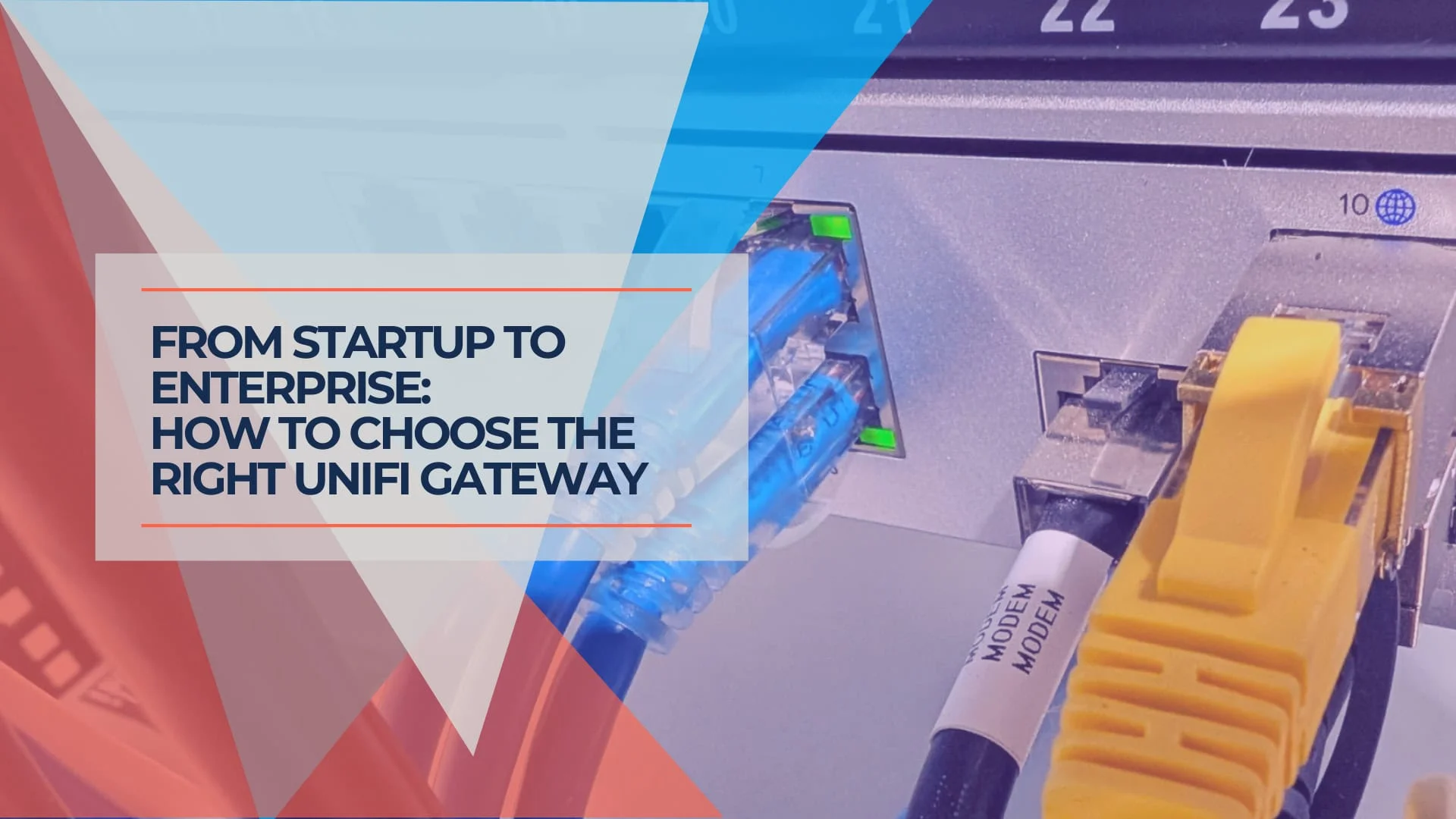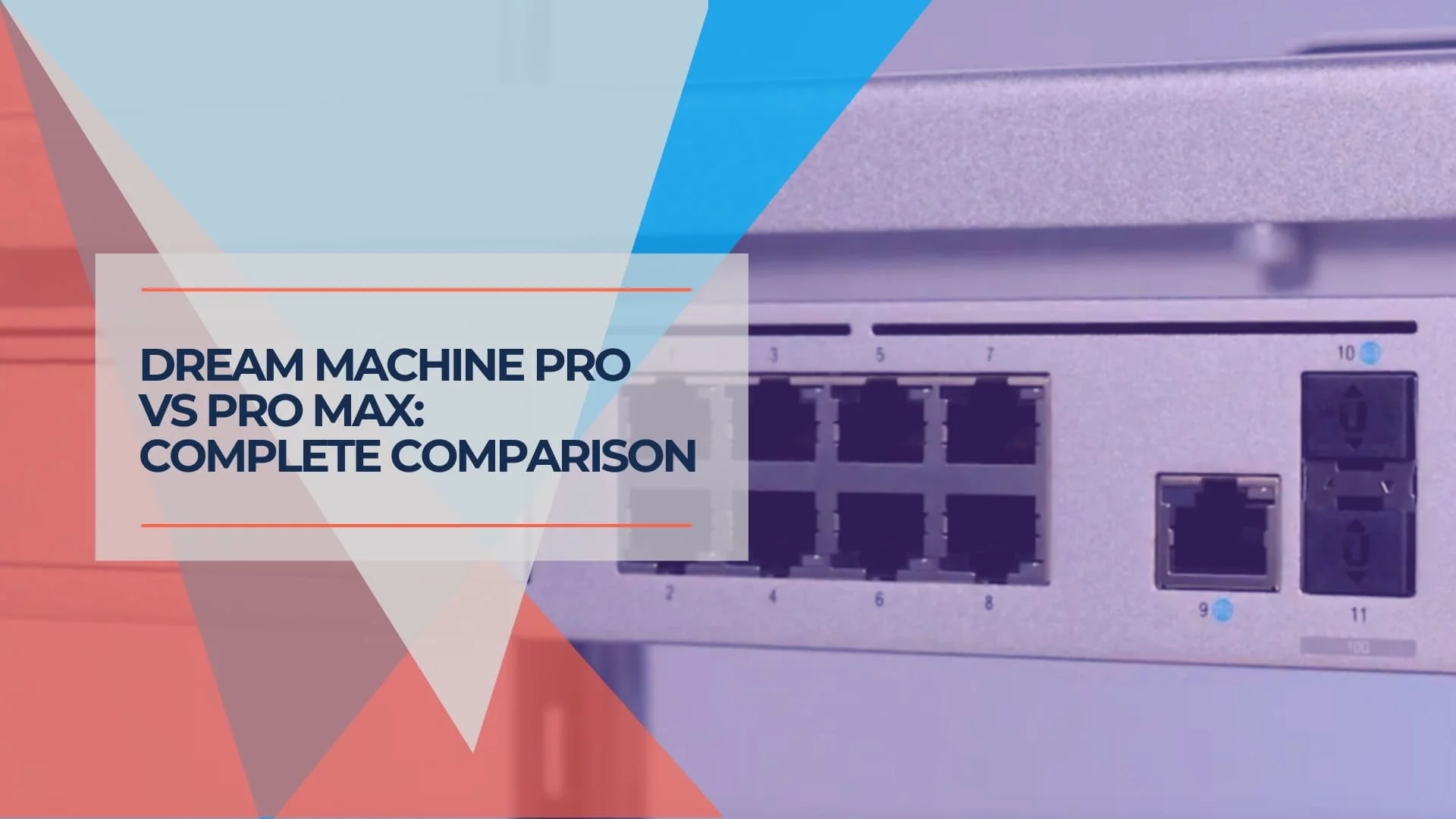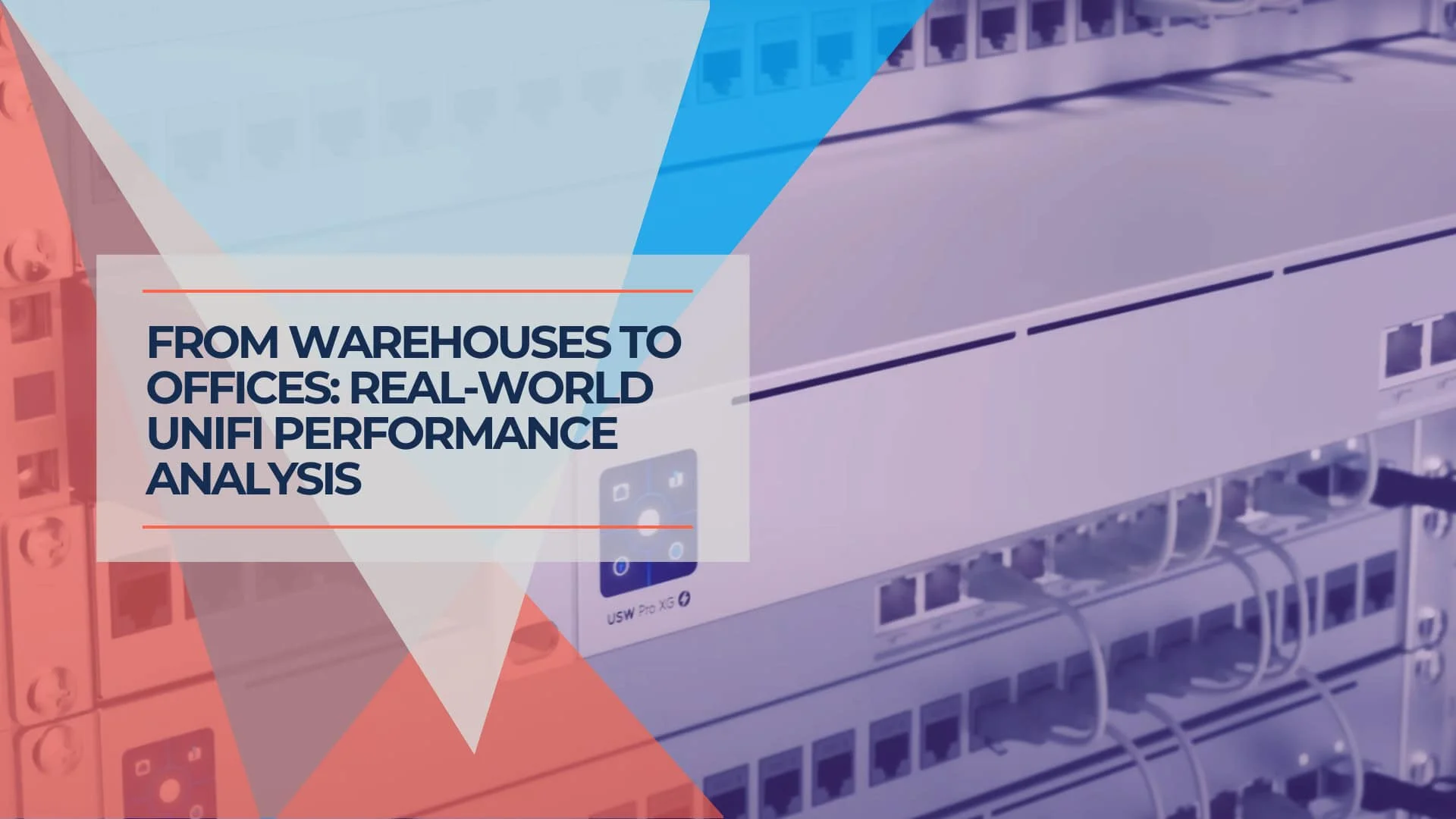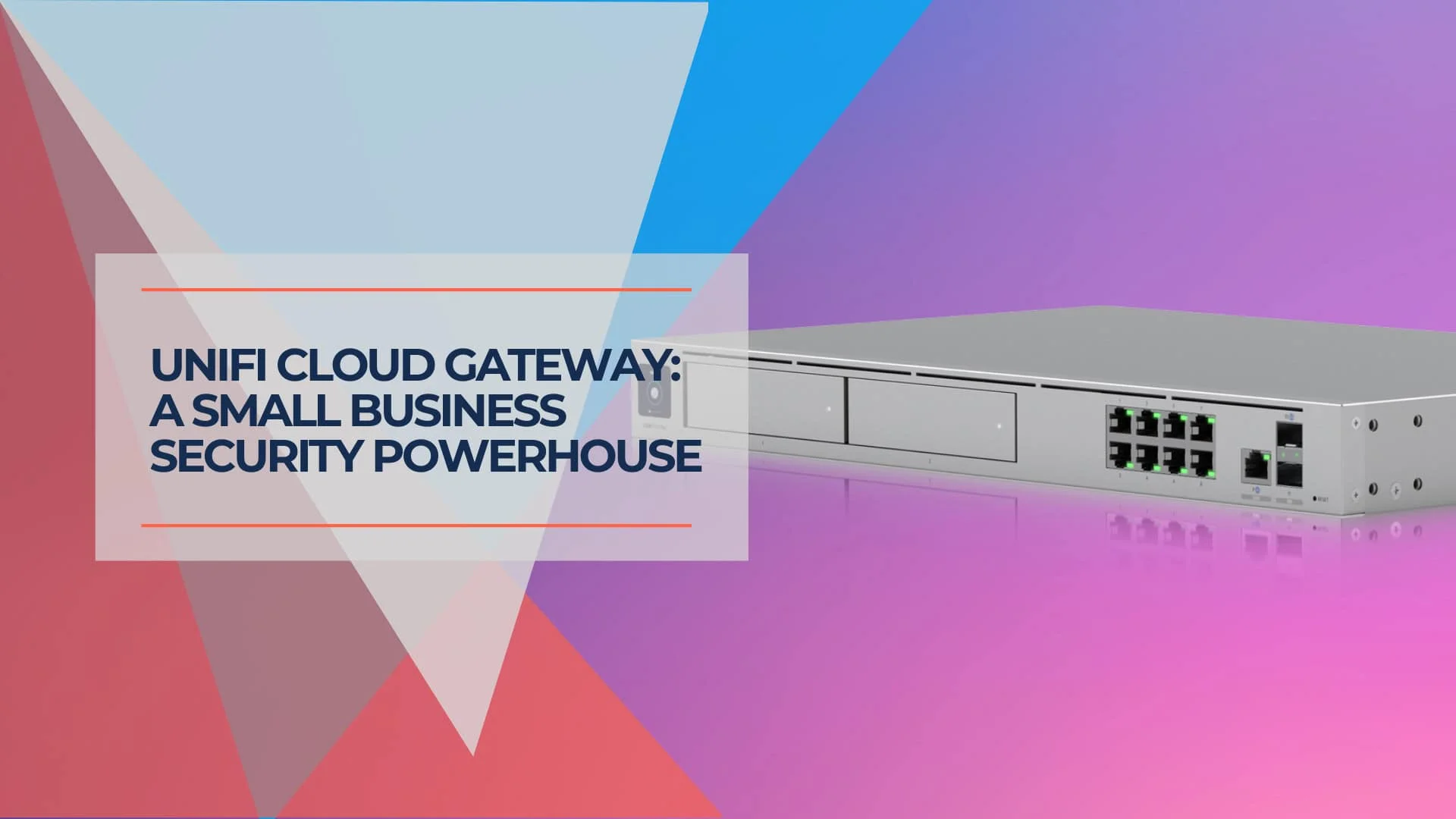UniFi Gateway Selection Guide 2025: When You Need More Than Cloud Gateway Ultra
Complete UniFi gateway comparison from Cloud Gateway Ultra ($129) to Enterprise Fortress Gateway ($1,999). Learn exact thresholds for device count, throughput, and storage needs.


Key Takeaway
The Cloud Gateway Ultra serves entry-level deployments well, but specific growth indicators signal when businesses need the enhanced throughput, storage capacity, or device management capabilities of higher-tier gateways. This guide identifies precise thresholds that trigger upgrades across the UniFi gateway lineup, from the $129 Ultra through the $1,999 Enterprise Fortress Gateway.
Affiliate Disclosure: This article contains affiliate links. If you make a purchase through these links, we may earn a small commission at no extra cost to you.
Understanding Gateway Limitations: When Good Enough Isn't
The UniFi Cloud Gateway Ultra represents an excellent entry point for businesses transitioning to professional networking. At $129, it delivers capabilities that would have cost thousands just five years ago. However, network requirements evolve, and understanding when you've reached the limits of any gateway prevents performance bottlenecks before they impact operations.
After deploying over 50 UniFi networks in the last couple of years, we've identified specific patterns that indicate when businesses need to consider gateway upgrades. These recommendations aren't arbitrary—they're based on actual performance thresholds where networks begin experiencing measurable degradation.
The UniFi Gateway Progression: Five Strategic Tiers
UniFi's current gateway lineup follows a logical progression designed around actual business growth patterns:
Entry Level: Cloud Gateway Ultra ($129)
Compact desktop gateway managing 30+ devices and 300+ concurrent clients with 1 Gbps IDS/IPS throughput. Ideal for businesses with 5-15 employees using standard office applications.
Growth Tier: Cloud Gateway Max ($199-$479)
Enhanced throughput (2.3 Gbps) with optional NVMe storage for surveillance integration. Addresses bandwidth limitations and adds complete UniFi application support.
Professional Grade: Dream Machine Pro ($379)
Rackmount solution supporting 100+ devices and 1,000+ clients with 3.5 Gbps IDS/IPS throughput. Includes 10 Gbps SFP+ connectivity and integrated NVR storage.
Advanced Business: Dream Machine Pro Max ($599)
Doubles capacity to 200+ devices and 2,000+ clients with 5 Gbps IDS/IPS throughput. Features dual storage bays with RAID protection and enhanced processing power.
Enterprise Scale: Enterprise Fortress Gateway ($1,999)
Complete high availability solution managing 500+ devices and 5,000+ clients with 12.5 Gbps IDS/IPS throughput. Includes 25 Gbps SFP28 ports and redundant power supplies.
Cloud Gateway Ultra: Identifying Growth Boundaries

The Cloud Gateway Ultra serves small offices effectively within specific parameters. Understanding these boundaries helps you recognize when your network has outgrown its capabilities.
Device Count Threshold
While Ubiquiti rates the Ultra for 30+ managed devices, practical experience suggests performance degradation begins around 25 devices when running full threat management. This includes switches, access points, and any other UniFi hardware—not client devices.
The 300+ client capacity proves adequate for offices with 15-20 employees, accounting for multiple devices per person (laptop, phone, tablet). Beyond this point, you'll notice increased latency during high-usage periods.
Internet Speed Limitations
The 1 Gbps IDS/IPS throughput represents real-world performance with all security features enabled. The Ultra will create a bottleneck if your internet connection exceeds 800 Mbps and you require full threat detection. Similarly, the 1 GbE LAN ports limit local file transfer speeds even if your WAN connection supports higher bandwidth.
Application Restrictions
The Ultra runs UniFi Network exclusively. If you need UniFi Protect for surveillance, Talk for VoIP, or Access for door control, you'll require the Cloud Gateway Max as your minimum gateway.
Performance Reality Check
The Ultra's 2.5 GbE WAN port can't be fully utilized due to 1 GbE LAN port limitations. Even with multi-gigabit internet, individual clients max out at gigabit speeds. This matters for businesses regularly transferring large files or running bandwidth-intensive applications.
Cloud Gateway Max: The Surveillance Integration Point

The Cloud Gateway Max addresses three specific limitations: throughput constraints, storage requirements, and application support. At $199 for the base model (without storage), it represents a strategic upgrade for growing businesses.
Throughput Enhancement
The 2.3 Gbps IDS/IPS throughput accommodates multi-gigabit internet connections while maintaining full security features. More importantly, the 2.5 GbE LAN ports enable actual utilization of faster WAN speeds across your network. For offices with fiber connections exceeding 1 Gbps, this upgrade becomes essential.
Storage Integration
The optional NVMe storage slot distinguishes the Max from the Ultra. Storage options include 512GB ($279), 1TB ($359), and 2TB ($479) configurations. This enables UniFi Protect surveillance without requiring a separate NVR, consolidating network management and video storage in one device.
The 1TB configuration provides adequate capacity for businesses adding 4-8 security cameras with 30-day retention. Larger deployments or longer retention periods require the 2TB option or consideration of the Dream Machine Pro with traditional HDD storage.
Complete Application Suite
The Max supports all UniFi applications: Network, Protect, Talk, Access, and Connect. This matters when your technology requirements extend beyond basic networking into surveillance, VoIP, or access control systems. Rather than running separate controllers, the Max consolidates management into one interface.
Upgrade Trigger Points for Max:
- Internet connection exceeds 1 Gbps with full security requirements
- Need for 4-8 UniFi Protect cameras with 30-day retention
- VoIP deployment requiring UniFi Talk integration
- Access control system using UniFi Access readers
- Local network transfers regularly exceeding gigabit speeds
Dream Machine Pro: The Rackmount Transition

The UniFi Dream Machine Pro represents a significant architecture change—not just in performance but in deployment approach. At $379, it targets businesses ready for rackmount infrastructure and professional-grade capabilities.
Capacity Expansion
The UDM Pro's support for 100+ UniFi devices and 1,000+ concurrent clients addresses growing organizations. This typically corresponds to businesses with 30-75 employees across multiple departments or locations.
The 3.5 Gbps IDS/IPS throughput handles multi-gigabit internet while maintaining comprehensive threat detection. Combined with the 10 Gbps SFP+ WAN and LAN ports, it eliminates bandwidth constraints for businesses investing in fiber connectivity.
Storage Architecture
Unlike the Max's NVMe slot, the Pro features a 3.5" HDD bay supporting traditional hard drives. This matters for surveillance deployments requiring cost-effective high-capacity storage. An 8TB drive costs approximately $200, providing substantially more capacity than NVMe options at lower per-gigabyte costs.
For businesses planning 12-20 camera deployments with 30-60 day retention, the Pro's HDD support delivers better economics than the Max's NVMe storage.
10 Gbps Infrastructure
The Pro's 10 Gbps SFP+ ports enable high-speed backbone connectivity. This matters when connecting to network storage, establishing point-to-point links between buildings, or supporting bandwidth-intensive workflows like video editing or CAD rendering.
The eight 1 GbE RJ45 ports plus 10 Gbps SFP+ LAN uplink provide flexibility for mixed-speed networks, allowing strategic placement of 10 Gbps connectivity where needed while maintaining standard gigabit for most devices.
UDM Pro vs. UDM Pro SE
The UDM Pro SE ($499) adds integrated PoE switching—eight ports with 180W total power budget. For deployments with 6-8 PoE devices (access points, cameras, VoIP phones), the SE eliminates the need for a separate PoE switch, potentially reducing total system cost while simplifying installation.
UDM Pro Upgrade Triggers:
- Managing 25+ UniFi devices across the office and remote locations
- Supporting 30-75 employees with multiple devices each
- Surveillance requirements exceeding eight cameras or 30 days of retention
- 10 Gbps backbone connectivity for server infrastructure
- Multi-WAN failover with load balancing requirements
- Professional rackmount installation with UPS integration
Dream Machine Pro Max: Enhanced Reliability and Performance

The Dream Machine Pro Max ($599) addresses specific limitations in the standard Pro: single-point storage failure, insufficient processing power for large deployments, and bandwidth constraints under heavy security load.
Doubled Capacity
The Pro Max supports 200+ UniFi devices and 2,000+ concurrent clients—exactly double the standard Pro. This corresponds to businesses with 75-150 employees or organizations managing multiple locations through a central gateway.
The enhanced processing capability (2.0 GHz vs. 1.7 GHz, 8GB vs. 4GB RAM) ensures smooth operation even under maximum load. This headroom prevents performance degradation for networks approaching the Pro's 100-device limit.
RAID Storage Protection
The dual 3.5" HDD bays enable RAID1 mirroring, which is true redundancy for surveillance footage. For businesses where video evidence has legal or liability implications, this protection justifies the upgrade cost.
RAID1 also enables zero-downtime drive replacement. When a drive fails, operations continue on the remaining drive while you schedule replacement, avoiding the system downtime required with single-drive configurations.
Increased Security Throughput
The 5 Gbps IDS/IPS throughput represents a 43% increase over the standard Pro. This matters for organizations with multi-gigabit internet connections requiring complete threat management without creating bottlenecks.
The additional 2.5 GbE WAN port provides multi-WAN flexibility, enabling load balancing across connections or a failover configuration without consuming the 10 Gbps SFP+ port.
Pro Max vs. Pro: The $220 Decision
The Pro Max costs $220 more than the standard Pro. This price difference buys doubled capacity, RAID storage, 43% higher security throughput, and enhanced processing power. These capabilities justify the investment for businesses planning significant growth or requiring surveillance reliability. Organizations satisfied with single-drive storage and capacity under 100 devices should save the $220 and invest in better switching or access points instead.
Pro Max Upgrade Triggers:
- Managing 50-200 UniFi devices across multiple locations
- Supporting 75-150 employees with comprehensive device coverage
- Surveillance footage requiring legal compliance or liability protection
- Internet connections exceeding 3 Gbps with complete security enabled
- Multi-site deployments requiring centralized gateway management
- Zero-downtime requirements for business-critical operations
Enterprise Fortress Gateway: High-Availability and Scale

The Enterprise Fortress Gateway ($1,999) represents UniFi's enterprise offering, designed for organizations requiring complete high availability, massive scale, or multi-gigabit security throughput.
Enterprise Capacity
The EFG manages 500+ UniFi devices and 5,000+ concurrent clients, a capability that matches requirements for large campuses, multi-building facilities, or organizations with 300+ employees. The 12.5 Gbps IDS/IPS throughput accommodates 10 Gbps internet connections while maintaining comprehensive threat detection.
High Availability Architecture
The EFG's defining feature is Shadow Mode high availability with automatic failover (VRRP). This requires pairing two EFGs ($3,998 total) but provides true redundancy—if one gateway fails, the shadow unit takes over automatically within seconds.
This capability justifies the investment for organizations where network downtime creates significant financial impact or safety concerns. Healthcare facilities, financial services, manufacturing operations, and educational institutions frequently require this level of reliability.
25 Gbps Connectivity
The dual 25 Gbps SFP28 ports enable infrastructure previously limited to enterprise equipment costing tens of thousands of dollars. This supports high-bandwidth applications like video production, research computing, or large-scale virtualization.
Combined with two 10 Gbps SFP+ ports and two 2.5 GbE RJ45 ports (all remappable between WAN and LAN), the EFG provides unprecedented flexibility for complex network architectures.
Power Redundancy
The dual hot-swappable power supplies ensure operation continues even during power supply failure. When deployed in high-availability pairs, this creates four-way power redundancy—both gateways with dual supplies—providing maximum protection against hardware failure.
Enterprise Program Requirement
The EFG requires registration in Ubiquiti's Enterprise Partner Program. This includes professional support, deal registration, and pre-sales assistance, but may involve verification delays and dealer relationships. Organizations considering the EFG should plan for this procurement process.
EFG Upgrade Triggers:
- Managing 200-500 UniFi devices across a large campus or multi-building deployments
- Supporting 300+ employees with comprehensive network services
- Requiring 99.99% uptime with automatic failover capability
- Internet connections exceeding 10 Gbps with complete security requirements
- Healthcare, financial, or industrial environments with downtime costs exceeding thousands per hour
- Organizations needing 25 Gbps backbone for specialized applications
Gateway Selection Decision Framework
Choosing the appropriate gateway requires analyzing three primary factors: current requirements, planned growth, and budget constraints. This framework helps match business needs to gateway capabilities.
Device Count Analysis
Count your current UniFi devices (switches, access points, cameras, access readers) and project one-year growth. Add a 25% buffer for unexpected expansion. If this total approaches a gateway's device limit, select the next tier.
| Current + Projected Devices | Recommended Gateway | Safety Buffer |
|---|---|---|
| 5-20 devices | Cloud Gateway Ultra | Adequate for small office growth |
| 20-25 devices | Cloud Gateway Max | Better throughput, storage options |
| 25-75 devices | Dream Machine Pro | Professional capacity, 10G ports |
| 75-150 devices | Dream Machine Pro Max | Doubled capacity, RAID storage |
| 150-400 devices | Enterprise Fortress Gateway | Enterprise scale, HA capable |
Internet Speed Requirements
Match your internet connection speed to the gateway IDS/IPS throughput. Maintain 20% overhead for peak usage without creating bottlenecks.
| Internet Speed | Minimum Gateway | Full Security Throughput |
|---|---|---|
| Up to 800 Mbps | Cloud Gateway Ultra | 1 Gbps IDS/IPS |
| 1-1.8 Gbps | Cloud Gateway Max | 2.3 Gbps IDS/IPS |
| 2-2.8 Gbps | Dream Machine Pro | 3.5 Gbps IDS/IPS |
| 3-4 Gbps | Dream Machine Pro Max | 5 Gbps IDS/IPS |
| 5-10 Gbps | Enterprise Fortress Gateway | 12.5 Gbps IDS/IPS |
Application Requirements
Identify which UniFi applications your business needs now and within the following year. The Cloud Gateway Ultra only supports UniFi Network—any other application requires the Max or higher.
UniFi Protect (Surveillance) Minimum: Cloud Gateway Max with appropriate storage for camera count and retention requirements. Consider Dream Machine Pro for deployments exceeding 8 cameras or requiring retention beyond 30 days.
UniFi Talk (VoIP) Minimum: Cloud Gateway Max for basic functionality. Consider Dream Machine Pro or higher for deployments exceeding 10 phones or requiring call recording features.
UniFi Access (Door Control) Minimum: Cloud Gateway Max for installations with 1-3 access readers. Dream Machine Pro or higher is recommended for comprehensive access control deployments with multiple buildings or high reader counts.
Total Cost of Ownership Analysis
Gateway selection involves more than purchase price. Consider supporting infrastructure, power consumption, and maintenance requirements over three years.
Infrastructure Requirements
Compact gateways (Ultra, Max) require desktop or shelf space. Rackmount units (Pro, Pro Max, EFG) need appropriate rack infrastructure with proper ventilation and power distribution.
Budget approximately $400-800 for a 12U wall-mount rack with proper cooling and surge protection for rackmount deployments. This includes the rack itself ($200-300), a rackmount PDU ($100-150), and a suitable UPS ($100-350 depending on runtime requirements).
Storage Costs
Cloud Gateway Max NVMe storage has premium pricing: $280 for 512GB, $360 for 1TB, and $480 for 2TB. Dream Machine Pro and Pro Max use 3.5" HDDs, which cost approximately $120 for 4TB or $200 for 8TB—better economics for surveillance deployments.
For the Pro Max with RAID1, double the drive costs but gain redundancy. Two 4TB drives ($240) provide the same usable capacity as a single 4TB drive but eliminate single-point failure.
Power and Cooling
All UniFi gateways consume minimal power: 15-30W for compact models, 30-60W for rackmount units. Annual electricity costs at $0.12/kWh approximate $15-65 depending on model.
Rackmount deployments in enclosed spaces require ventilation planning. Budget for rack fans ($50-150) if deploying in closets or equipment rooms without existing cooling infrastructure.
3-Year TCO Comparison
| Gateway | Purchase Price | Infrastructure | 3-Year Total |
|---|---|---|---|
| Cloud Gateway Ultra | $129 | $50 (shelf, basic UPS) | ~$225 |
| Cloud Gateway Max (1TB) | $359 | $50 (shelf, basic UPS) | ~$455 |
| Dream Machine Pro | $379 | $850 (rack, UPS, HDD) | ~$1,350 |
| Dream Machine Pro Max | $599 | $1,090 (rack, UPS, dual HDDs) | ~$1,810 |
| Enterprise Fortress Gateway | $1,999 | $800 (rack, UPS) | ~$2,920 |
Migration Strategies and Configuration Transfer
UniFi's architecture simplifies gateway upgrades through configuration backup and restoration. However, understanding migration nuances prevents deployment issues.
Configuration Backup Process
Before any gateway replacement, download a full site configuration backup from Settings → System → Backup. This preserves network settings, security policies, port configurations, and wireless profiles.
Store this backup externally—not only on the gateway itself. If hardware failure forces replacement, external backup availability enables rapid restoration.
Application Considerations
Migrating from Ultra to Max or higher requires careful planning around UniFi applications. UniFi Protect recordings don't transfer between gateways, so plan surveillance deployment timelines accordingly.
UniFi Talk settings and recordings are transferred through configuration backup, but all VoIP devices are verified to reconnect properly after gateway replacement. Test critical phones immediately after migration.
Zero-Downtime Migrations
Businesses requiring continuous operation can deploy the new gateway alongside the existing one. Configure the replacement completely offline, then switch network connections during a scheduled maintenance window.
This approach requires a secondary internet connection or offline configuration via a directly connected laptop. The additional planning time reduces the outage duration from hours to minutes.
Professional Migration Services
For organizations concerned about migration complexity or downtime risks, professional installation services minimize disruption while ensuring proper configuration transfer. Our team provides gateway replacement services throughout South Florida with guaranteed minimal downtime and comprehensive testing before considering the migration complete.
Future-Proofing Considerations
Gateway selection should account for three-year technology evolution and business growth patterns.
Internet Speed Evolution
Multi-gigabit fiber continues expanding availability while prices decline. Areas currently limited to 1 Gbps connections frequently see 2-5 Gbps options within 18-24 months. To accommodate future upgrades without requiring gateway replacement, select gateways with throughput capacity exceeding current internet speeds by at least 50%.
WiFi 7 Migration
The transition to WiFi 7 access points increases bandwidth demands on gateway infrastructure. A single U7 Pro Max access point can theoretically deliver 8.6 Gbps aggregate throughput across three bands. Even with typical client distributions and real-world performance, multiple WiFi 7 access points can saturate gigabit gateways during high-usage periods.
Organizations planning WiFi 7 deployments should select gateways with 2.5 Gbps minimum throughput and multi-gigabit switching infrastructure to avoid creating bottlenecks at the gateway level.
Security Evolution
Threat detection and deep packet inspection become increasingly important as attack sophistication grows. Budget for CyberSecure subscriptions ($99-149/year, depending on gateway), providing real-time threat intelligence updates powered by Proofpoint.
This subscription-based service operates independently of gateway selection but influences the total cost of ownership. Organizations requiring compliance with specific security frameworks should budget for these ongoing costs alongside gateway investment.
Explore All UniFi GatewaysFrequently Asked Questions
Can I run multiple UniFi gateways in one network?
UniFi's architecture supports only one gateway per network. However, you can establish VPN connections between separate networks with their own gateway for inter-site connectivity. The Enterprise Fortress Gateway supports high availability pairing where two EFGs operate as redundant units, but this requires specific configuration, and both units must be EFGs.
What happens to my existing gateway when I upgrade?
Your existing gateway can be repurposed for secondary locations, development networks, or sold in the robust used UniFi market. Many businesses deploy replaced gateways at remote sites or warehouse facilities, maximizing initial investment while standardizing on UniFi ecosystem management.
Do I need to replace my switches when upgrading gateways?
Gateway upgrades don't require switch replacement unless you add 10 Gbps or 25 Gbps connectivity requiring compatible switching infrastructure. Existing gigabit switches continue functioning normally with any gateway upgrade. However, upgrading to Dream Machine Pro or higher enables 10 Gbps uplinks beneficial for backbone connectivity or network storage.
How does gateway selection affect UniFi Protect camera count?
Gateway processing power and storage capacity determine practical camera limits. Cloud Gateway Max supports approximately 8-12 cameras, depending on resolution and retention requirements. Dream Machine Pro and Pro Max handle 20-50 cameras with an appropriate storage configuration. Consider camera resolution, frame rate, and retention duration alongside camera count for accurate capacity planning.
Can the Enterprise Fortress Gateway operate without a paired unit?
The EFG functions independently without pairing. High availability requires two units configured as primary and shadow, but single-unit deployment delivers full performance and capacity. Organizations initially purchasing one EFG can add the second unit later when budget permits or business requirements justify a high availability investment.
What's the relationship between gateway capacity and actual office size?
Office square footage correlates loosely with gateway requirements through the number of access points needed for coverage. As a general guideline, Cloud Gateway Ultra handles small offices under 3,000 square feet with 2-4 access points. Cloud Gateway Max serves offices from 3,000-8,000 square feet requiring 4-8 access points. Dream Machine Pro accommodates 8,000-20,000 square feet facilities with a comprehensive UniFi deployment. These are rough estimates—actual requirements depend on construction materials, desired coverage density, and total device count, including switches, cameras, and access control.
Making Your Gateway Selection
Key Insight
UniFi gateway selection starts with an honest assessment of current requirements and a realistic projection of one-year growth. Rather than purchasing the highest-tier gateway "just in case," match current requirements to gateway capabilities while allowing a reasonable growth buffer. Money saved on unnecessary gateway capacity invests better in additional access points, managed switching, or enhanced security subscriptions that improve daily network performance.
The Cloud Gateway Ultra effectively serves small offices, but specific indicators—device count approaching 25, internet speeds exceeding 800 Mbps, and need for UniFi Protect surveillance—signal when upgrades deliver measurable value.
The Cloud Gateway Max addresses bandwidth limitations and storage requirements for growing businesses. Dream Machine Pro provides the capacity and connectivity supporting professional deployments with comprehensive UniFi ecosystems. Dream Machine Pro Max delivers enhanced reliability through RAID storage and doubled capacity for organizations requiring data protection or supporting larger teams. The Enterprise Fortress Gateway enables true high availability for operations where network downtime creates a significant financial or operational impact.
Related Articles
More from UniFi Networks

UniFi Dream Machine Pro vs Dream Machine Pro Max: What Changes and Is It Worth $220 More?
UDM Pro vs Pro Max comparison: Detailed specs, performance benchmarks, and real-world scenarios. Find out which UniFi gateway is right for your business.
11 min read

UniFi Network Solutions: 2025 Tech Overview
A comprehensive technical analysis of Ubiquiti's UniFi ecosystem for business networking and security. Covers gateways, WiFi 7 access points, CyberSecure, and real-world deployment experience.
13 min read

Network Security in a Box: Enterprise Protection Under $1,000 with UniFi
Achieve enterprise-grade network security for under $1,000 with UniFi gateway, CyberSecure by Proofpoint, and free UniFi Identity VPN. Complete deployment guide for small businesses.
27 min read